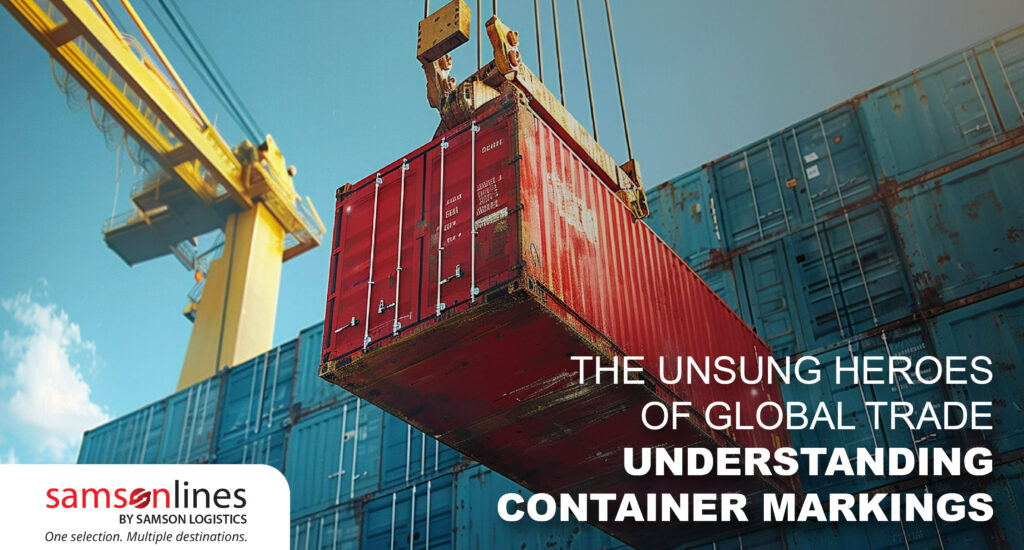
The Unsung Heroes of Global Trade: Understanding Container Markings
In the bustling world of global logistics, containers are the lifeblood of international trade. But beyond their robust frames, lies a fascinating world of markings that hold vital information, guiding their journey from origin to destination.
Let’s delve into the key elements:
- Container Number: The main marking on the backdoor is the container number which is an alphanumeric sequence consisting of 7 numbers and 4 letters. Each is issued by the ‘ISO’ under the specific code: ISO6346: 1995(E). It includes:
- A 3 lettered Owner Code
- A letter referring to the Equipment Category
‘ U’ means freight container
‘J’ refers to a detachable container or equipment (such as a power unit), and
‘Z’ applies to trailers and chassis
- A 6-digit Serial Number
- And, lastly, one number denoting the Check Digit
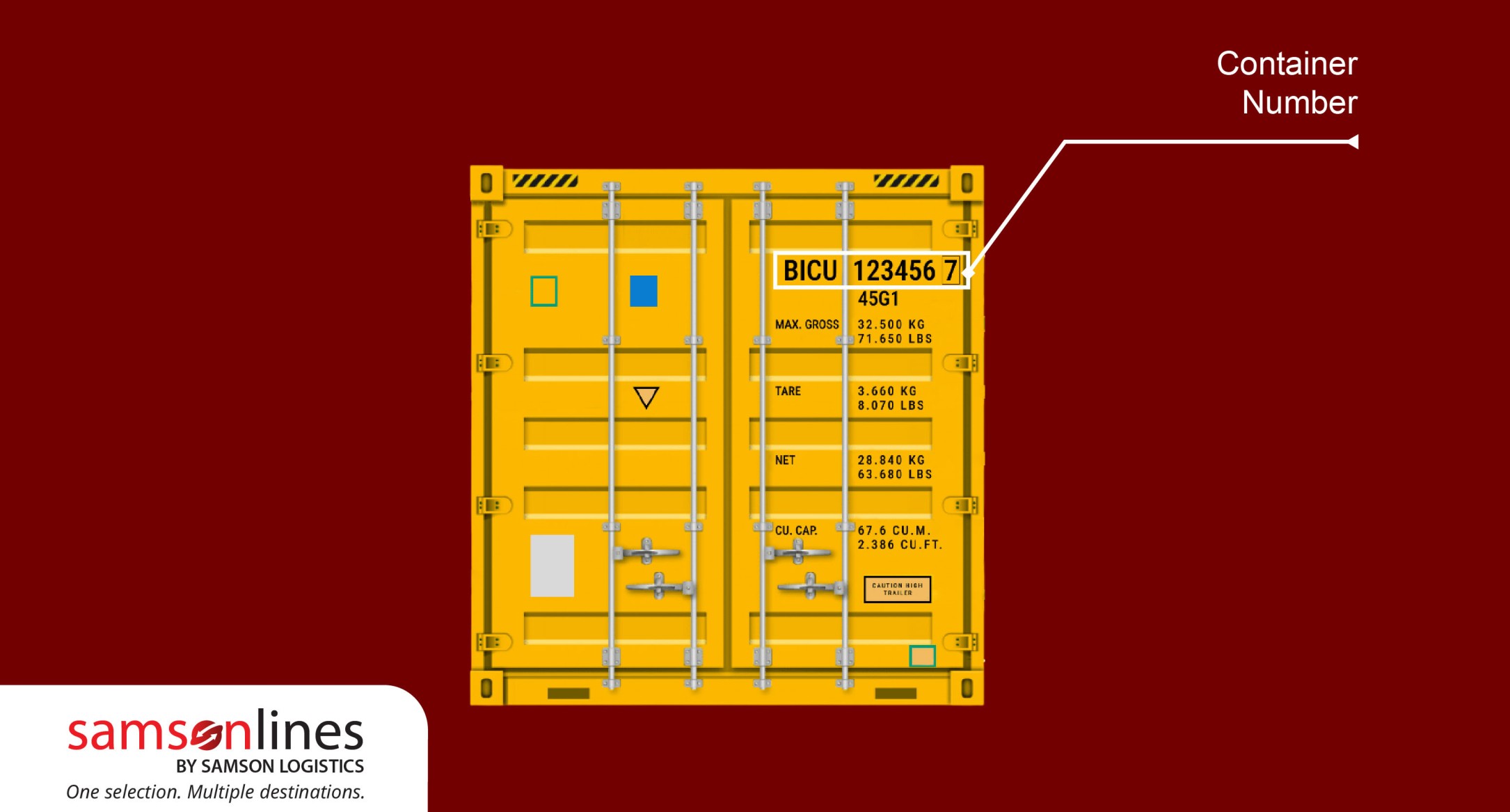
-
- Equipment Category: 1 letter signifying the container type (e.g., ‘ U’ means freight container, ‘J’ refers to a detachable container or equipment (such as a power unit), and ‘Z’ applies to trailers and chassis).
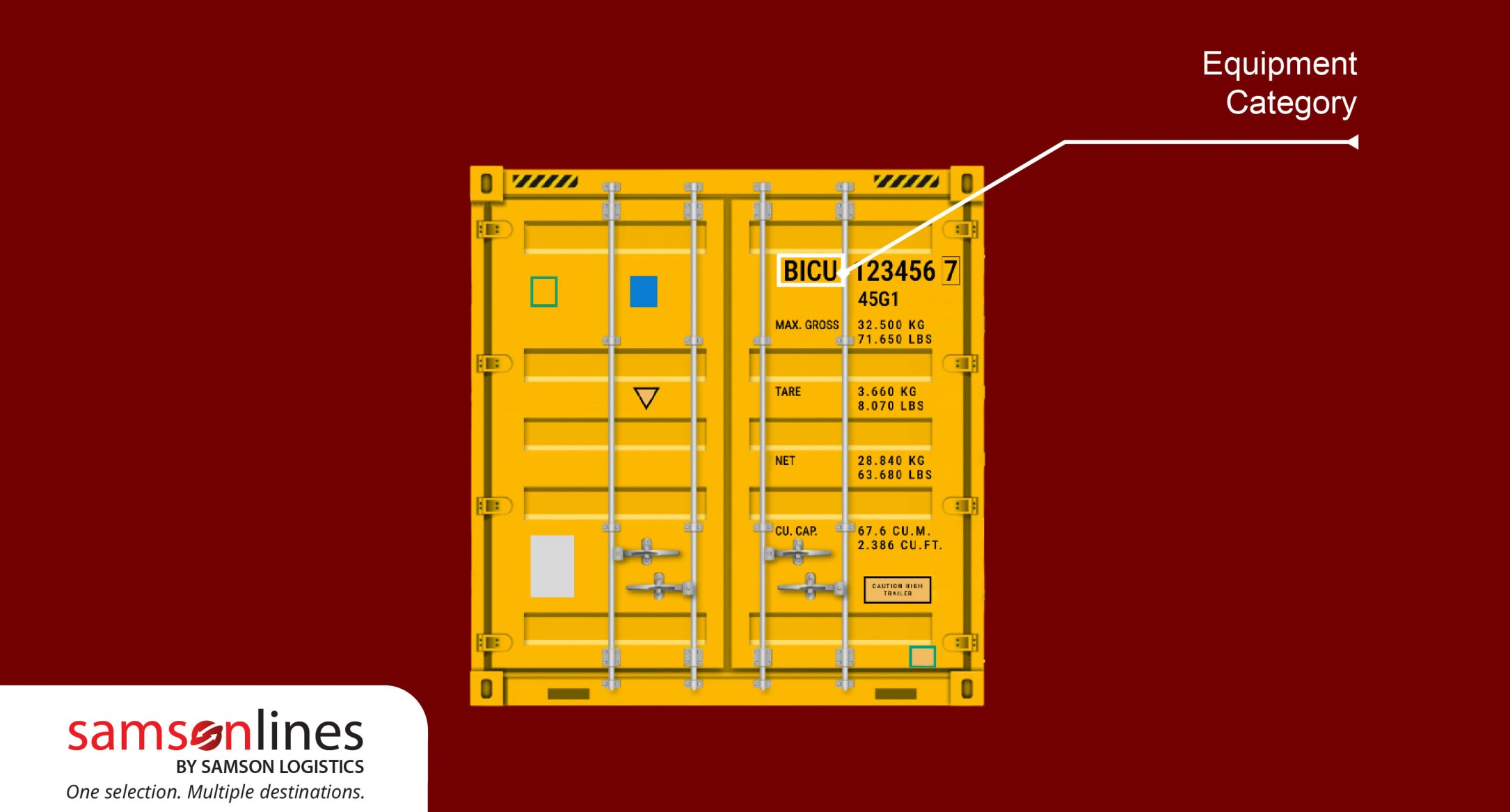
-
- Serial Number: 6 numbers for individual identification within the owner’s fleet.
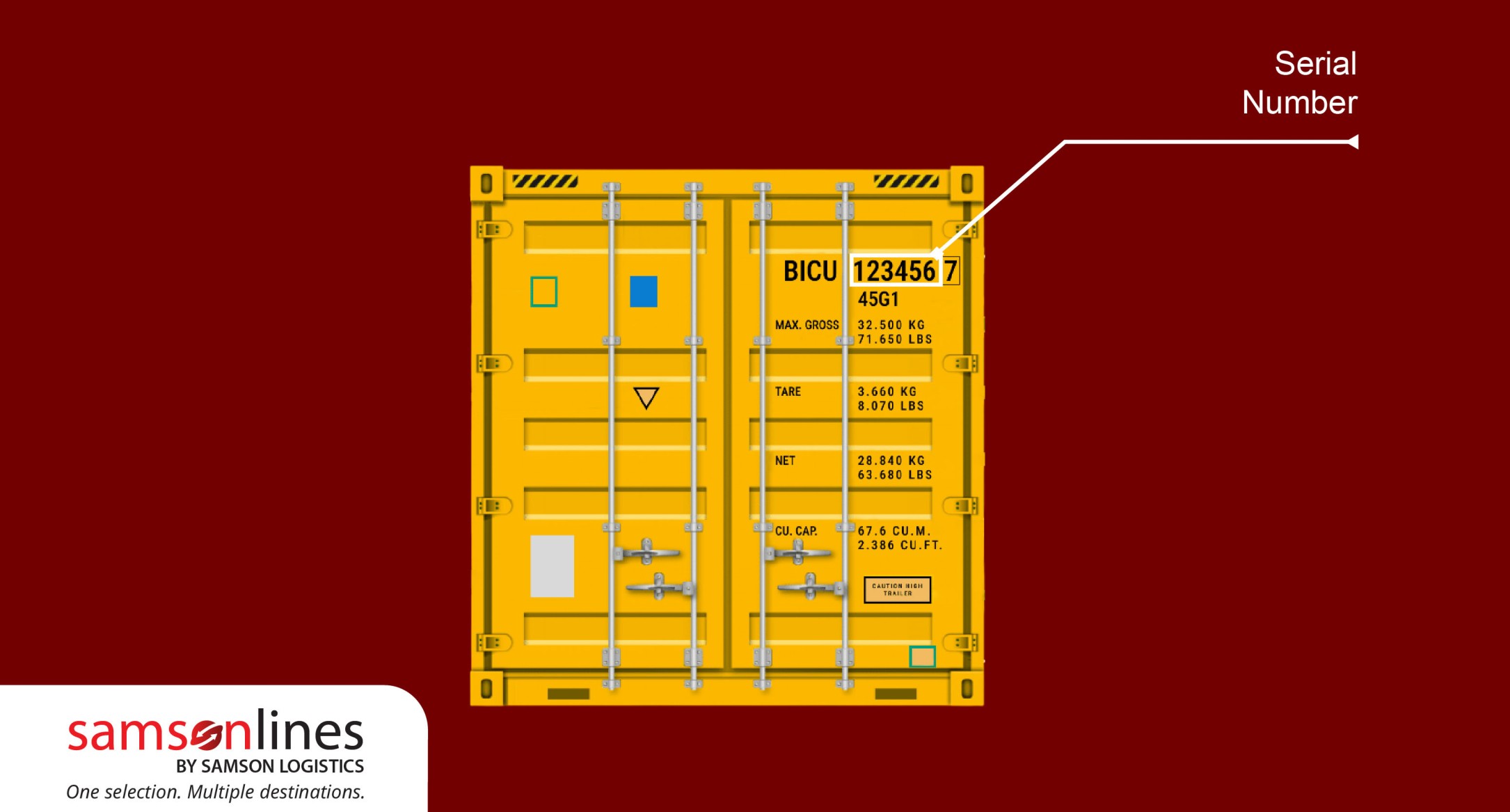
- Check Digit: 1 number crucial for validating the entire sequence, ensuring accuracy.
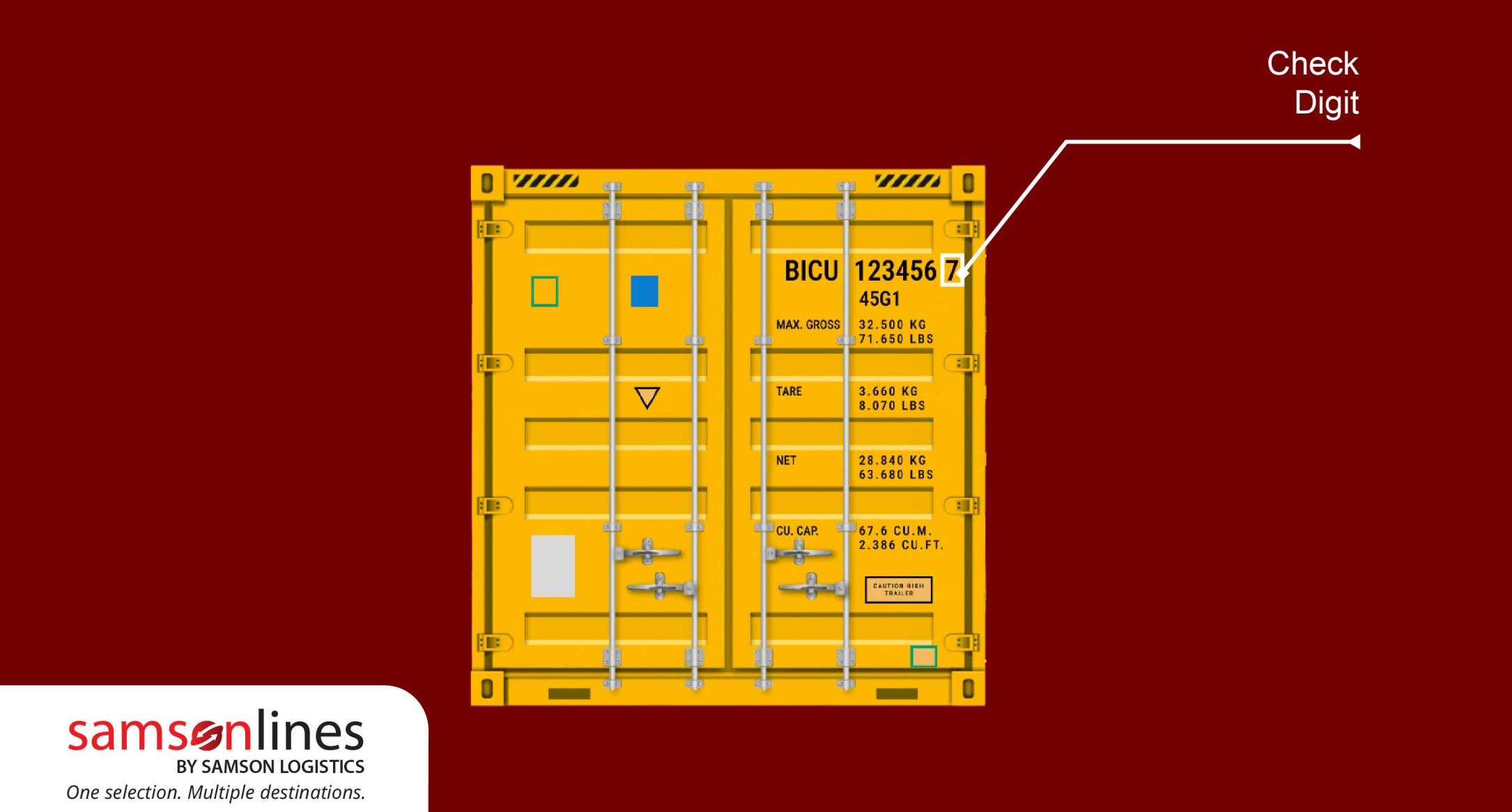
-
- Max Gross Weight: The maximum allowable load, including the container’s weight.
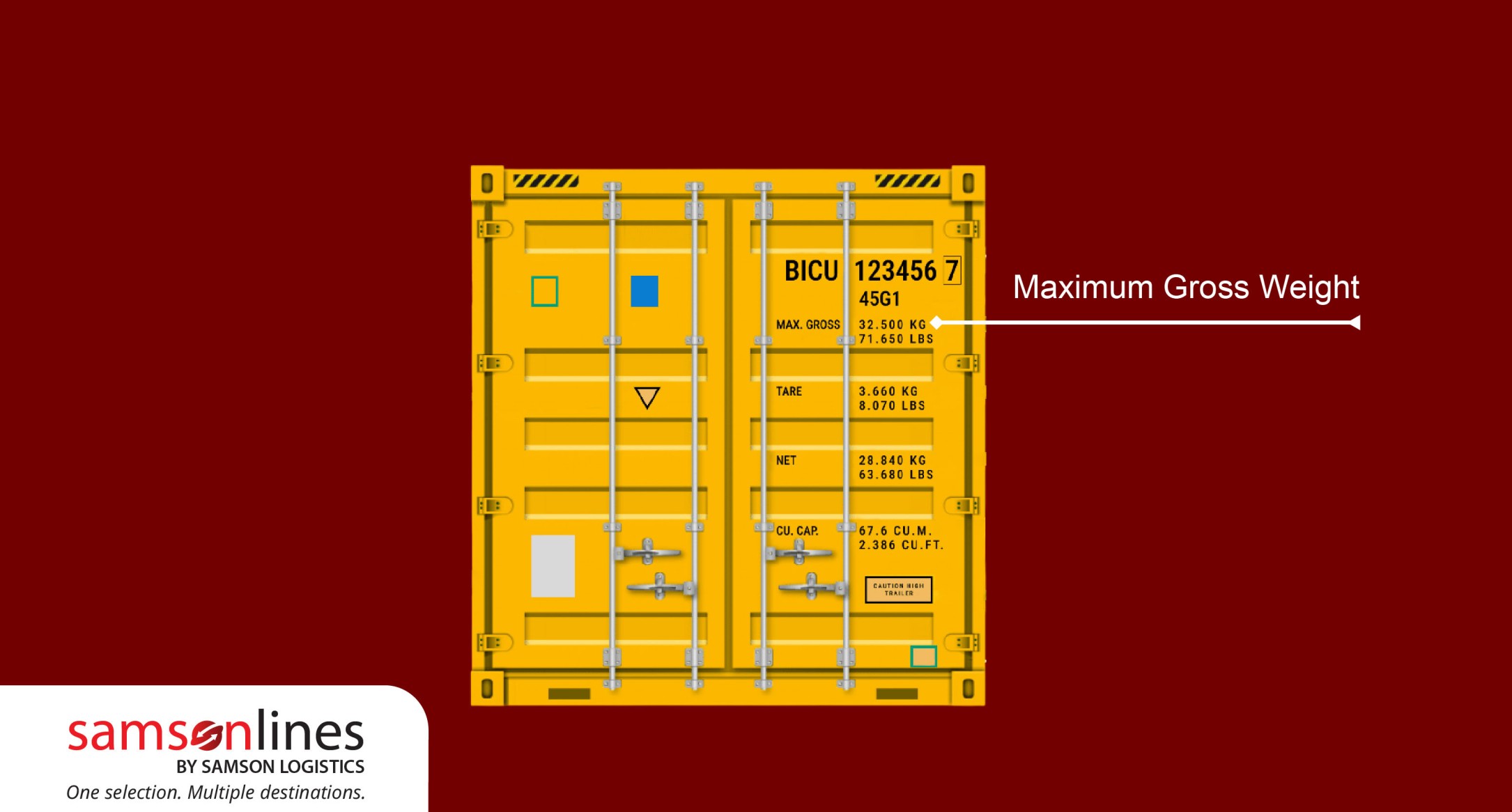
- Payload capacity: The maximum weight of cargo a container can hold, excluding the tare weight. E.g., 28.660 kgs.
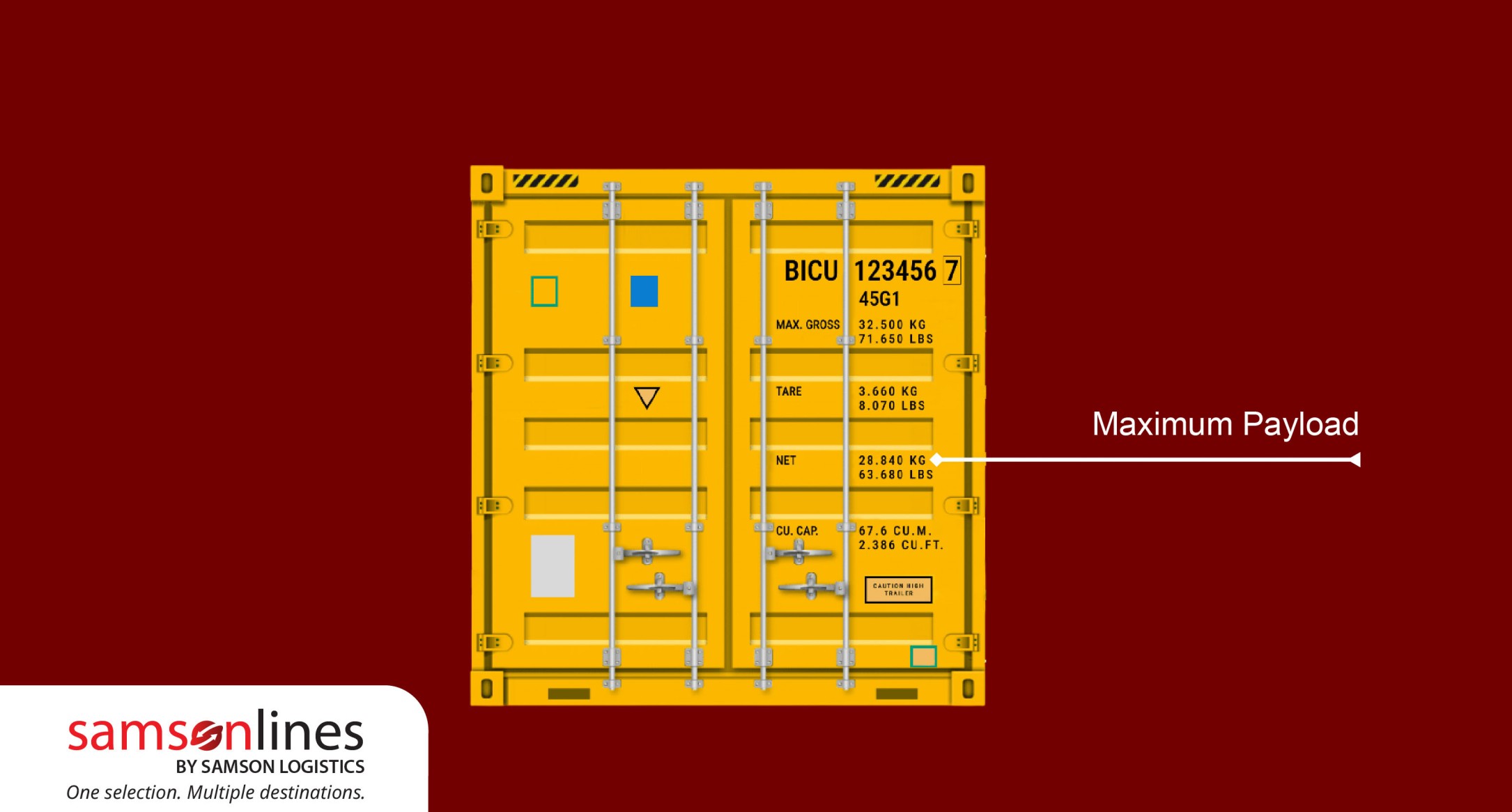
- Tare Weight: Tare weight is the weight of the empty container without any cargo. It is measured in kilograms. E.g., 3.840 kgs
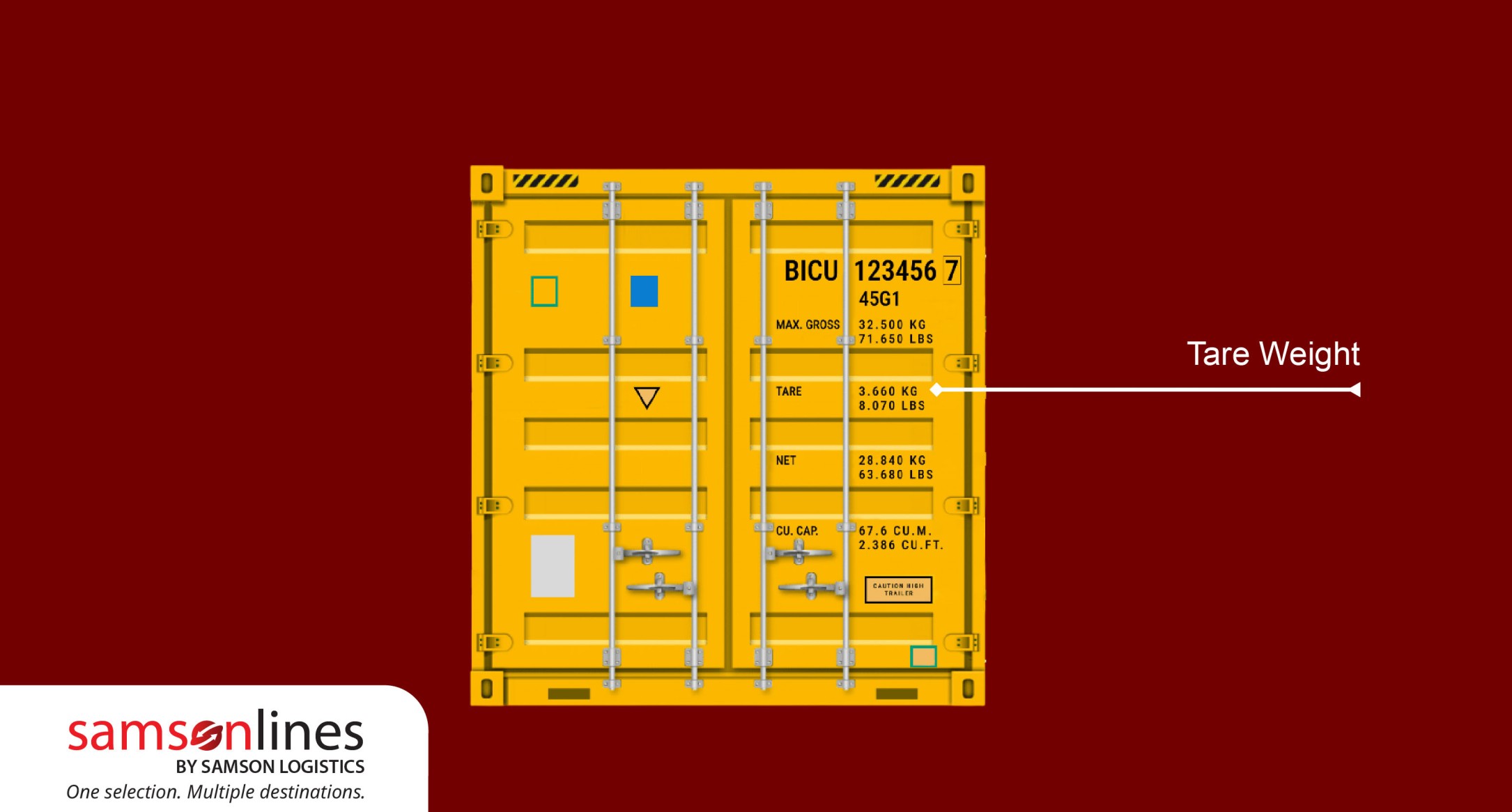
- Cube Capacity: Cube refers to the maximum volume that a container can hold.
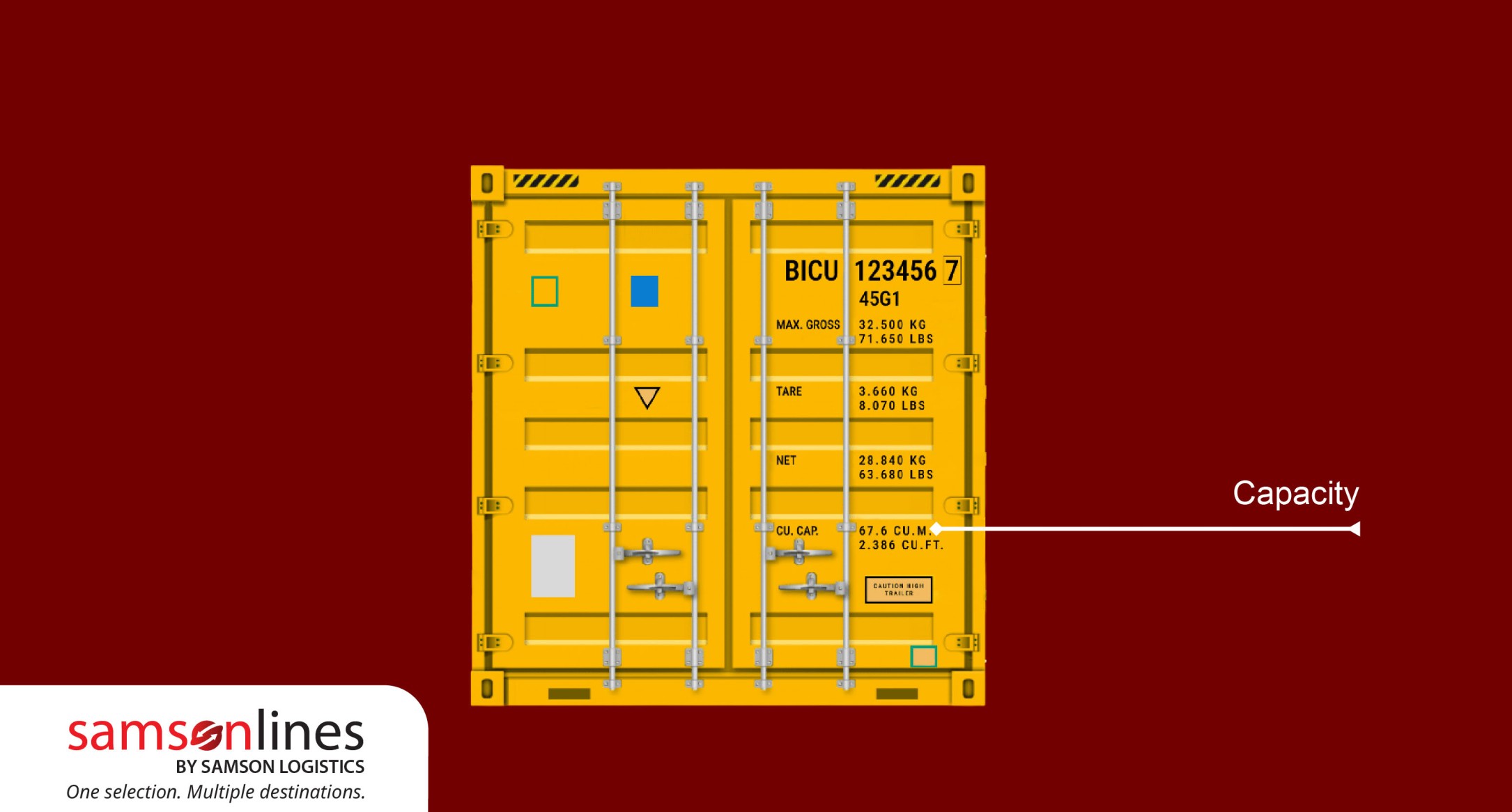
- Height Warning: ‘Caution: High Trailer’ sign on containers warns that the container is taller than standard heights.

- Manufacturers’ Logo: It is the logo of the company that produced or built the container. E.g., CIMC
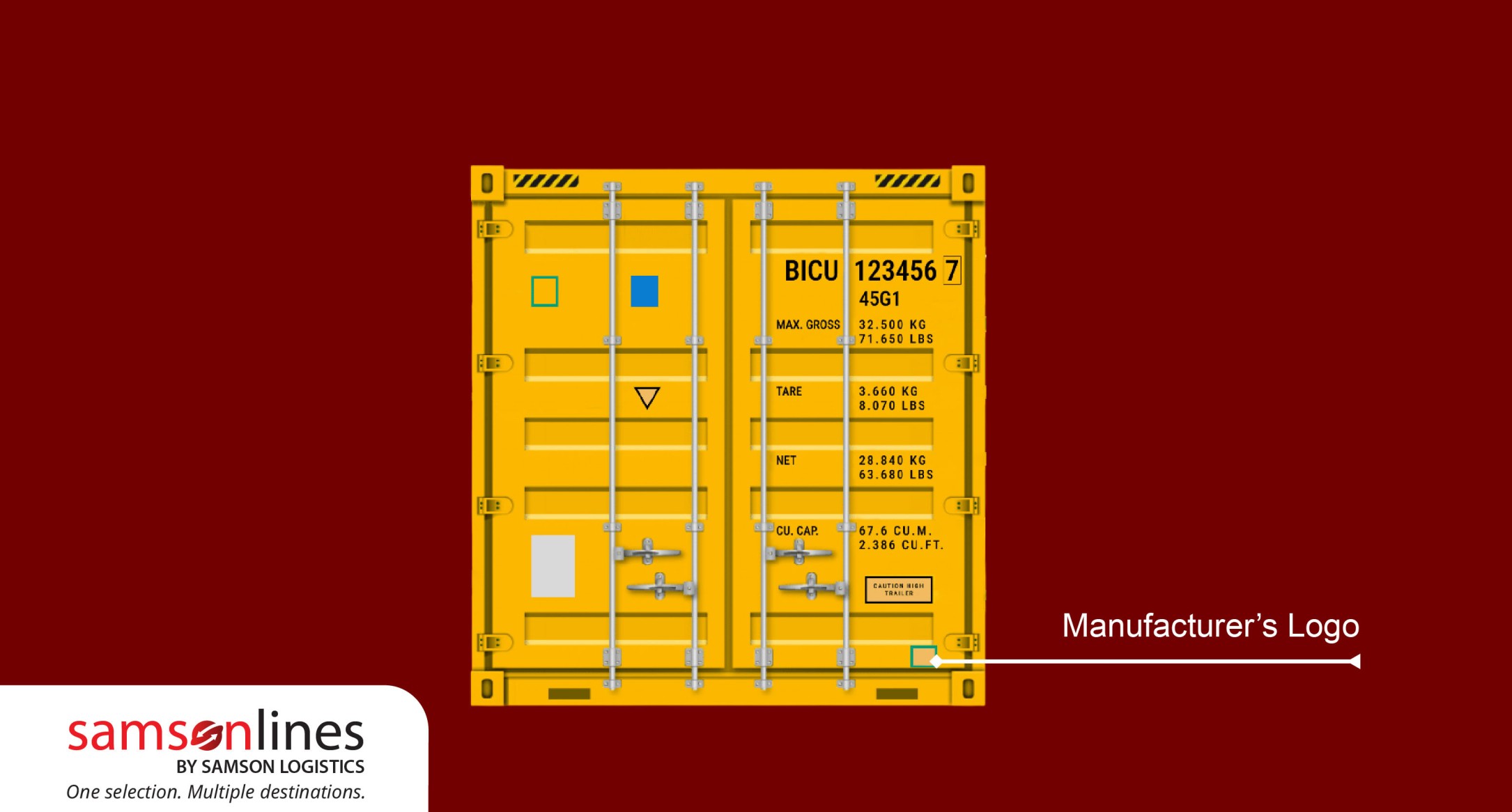
- Classification Society Mark: The “Classification Society Mark” indicates that the container has been inspected and certified by a classification society. It typically contains the logo of the classification society. E.g., RINA, Lloyd’s Register.
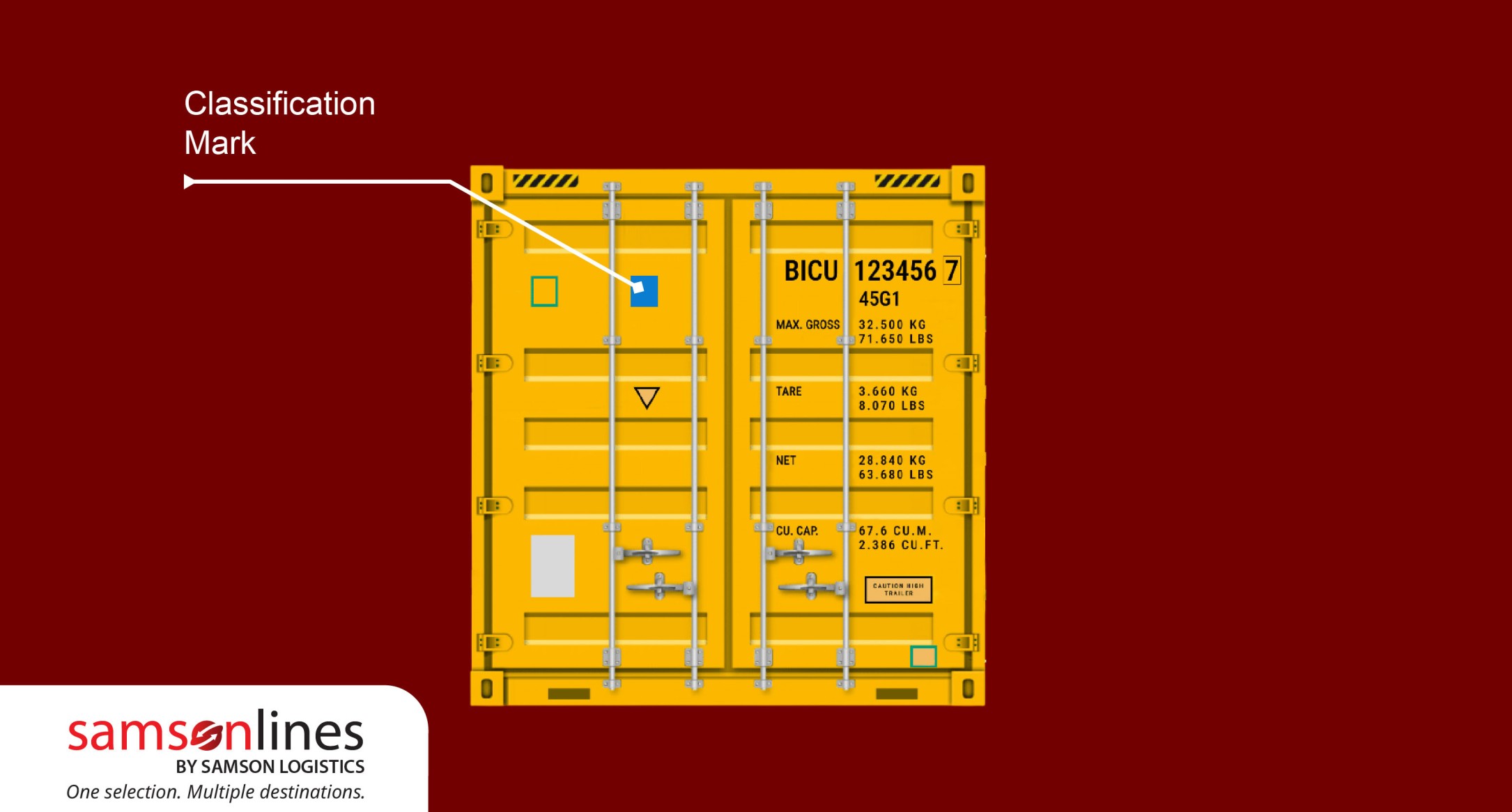
- Owner Logo: 3 letters revealing the container owner (e.g., CMA CGM).
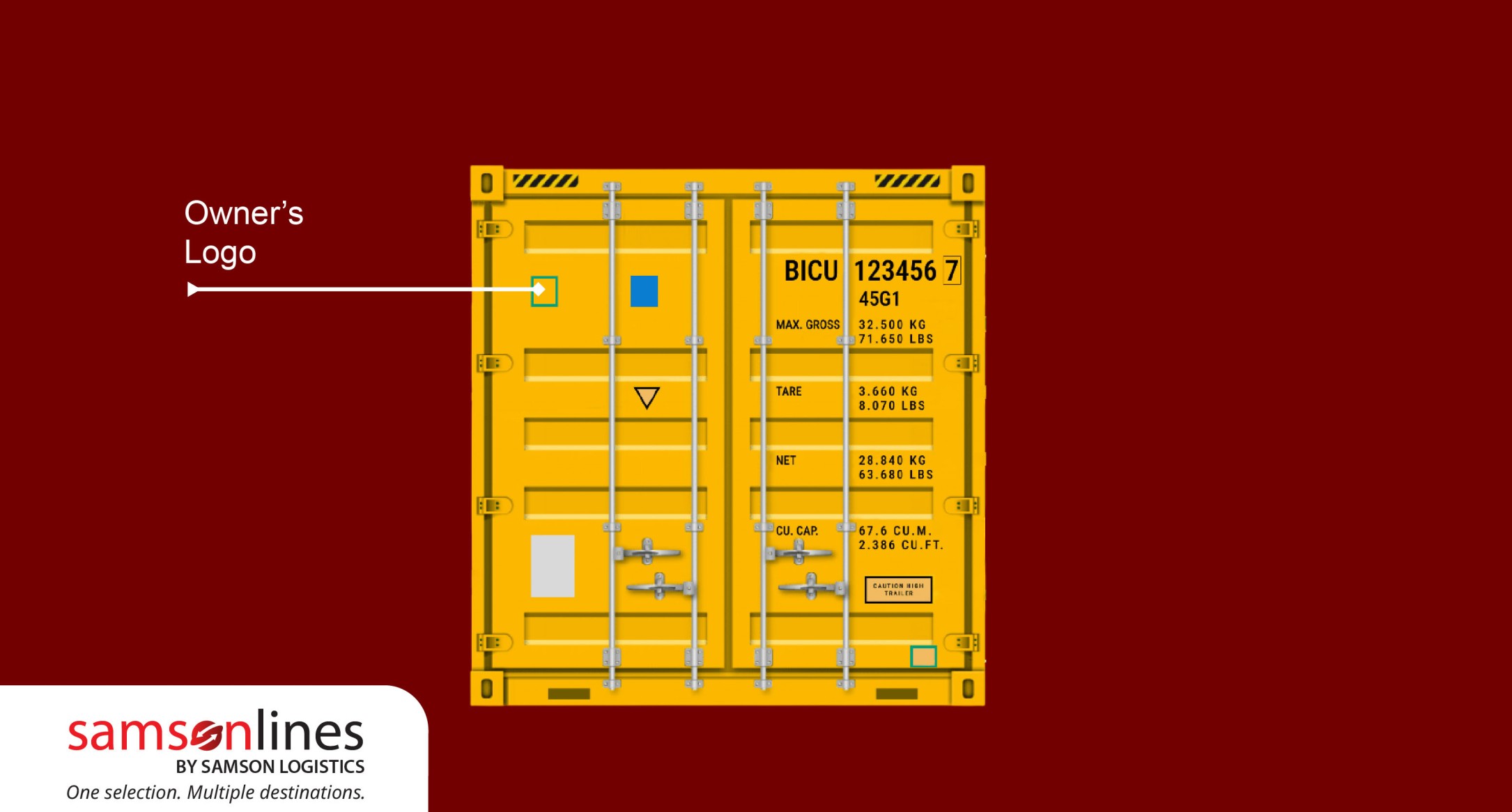
- Repair Recommendation: This sign guides on necessary repairs or maintenance for the container.
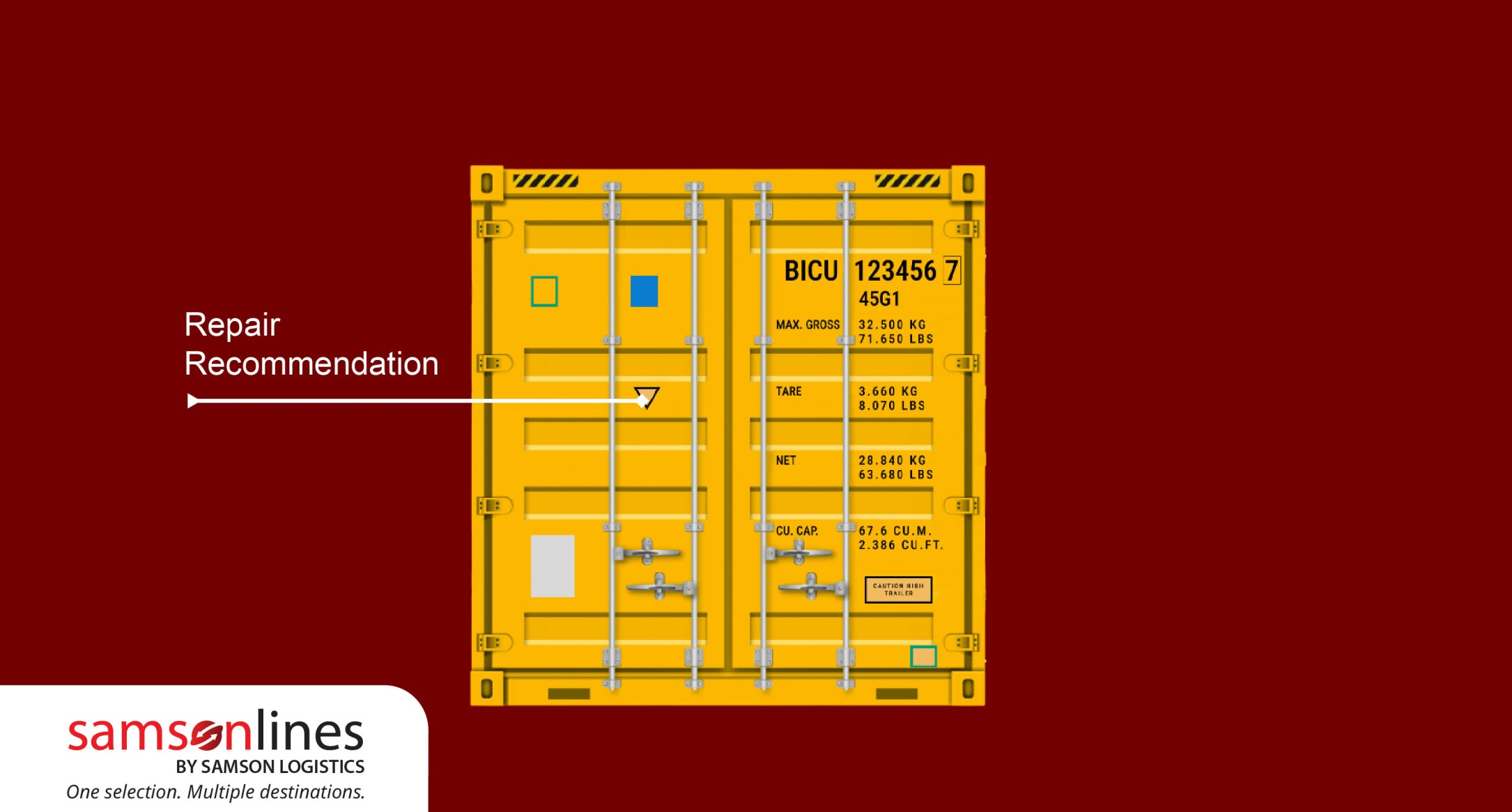
- Combined Data Plate: It is a silver-colored metal plate affixed to the container that contains all the essential information about the container, including the container number, tare weight, maximum gross weight, payload capacity, manufacturer’s details, and other regulatory information.
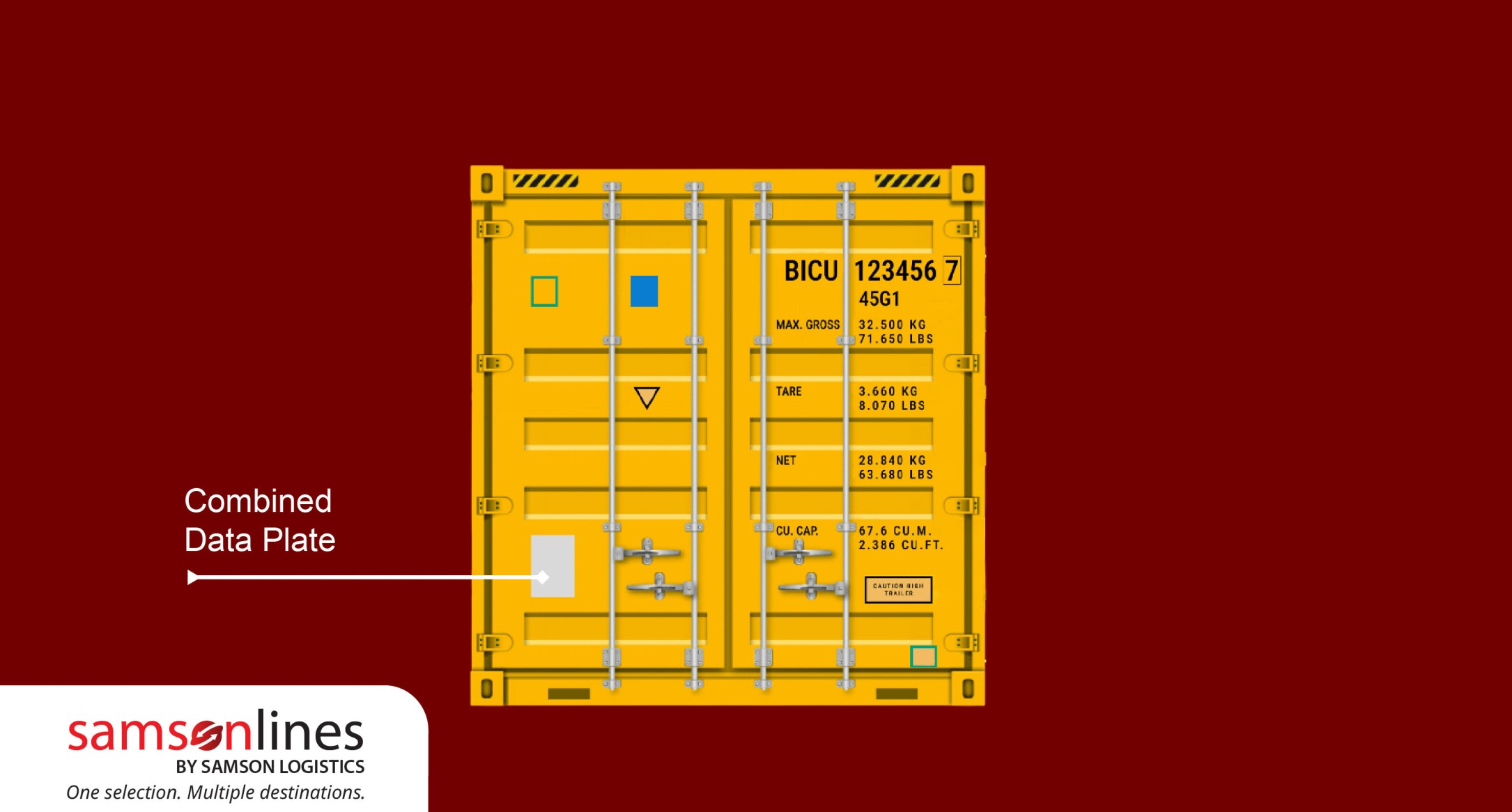
These seemingly simple markings are the foundation of efficient global trade. They enable:
- Seamless Tracking: Real-time monitoring of container locations and movements.
- Accurate Documentation: Streamlined customs clearance and port operations.
- Inventory Management: Precise control over goods throughout the supply chain.
- Risk Mitigation: Early identification of potential issues and proactive problem-solving.
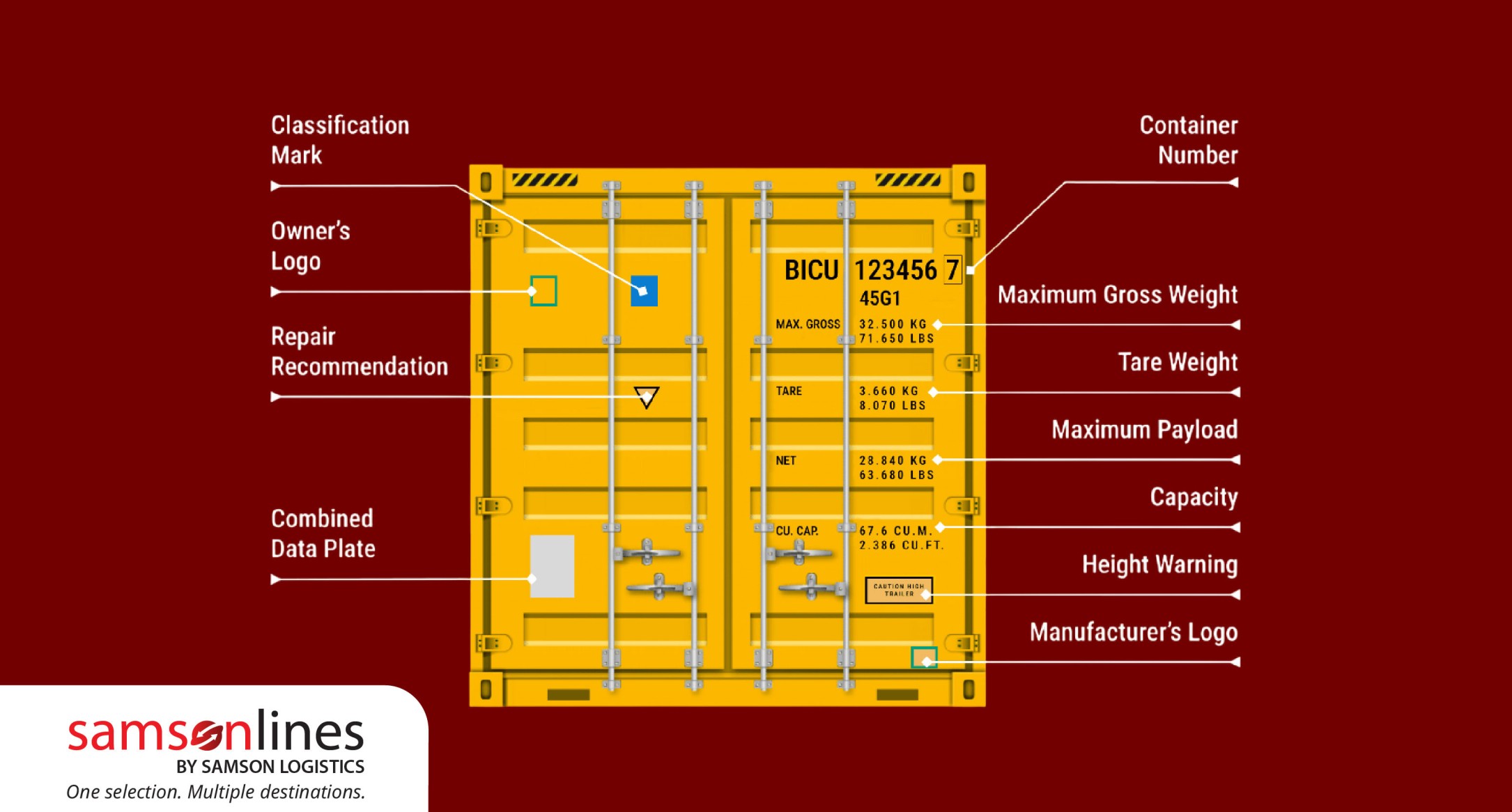
At Samsonlines, we understand the critical role these markings play. Our expertise in logistics ensures that every container is handled with care and its journey meticulously tracked, minimizing delays and ensuring timely delivery.
#GlobalLogistics #ContainerShipping #SupplyChain #LogisticsSolutions #Samsonlines





